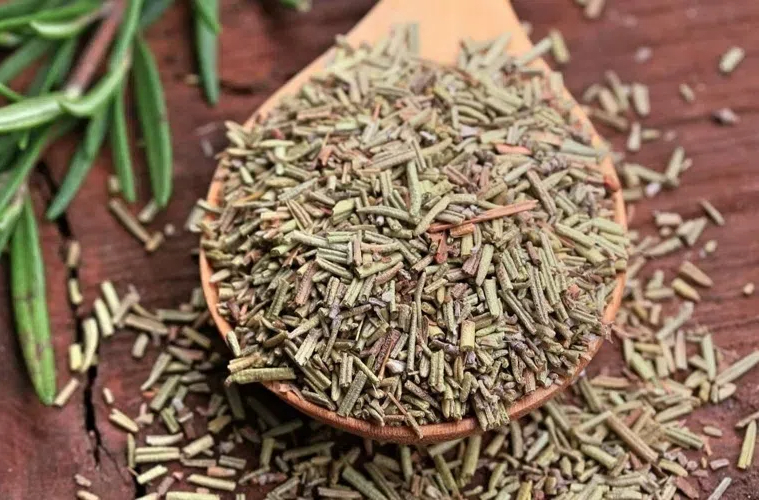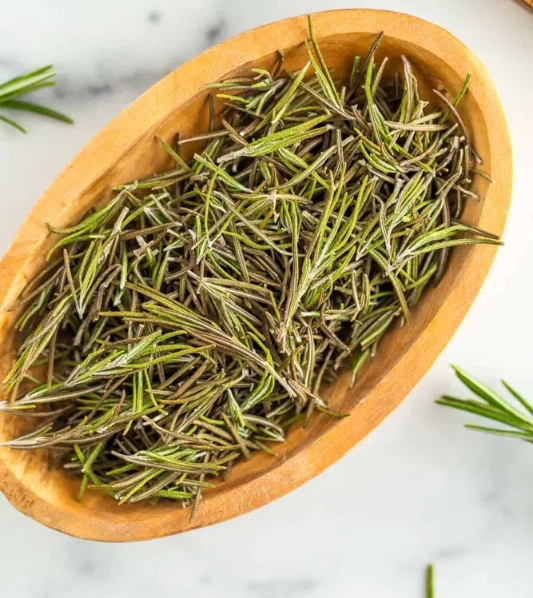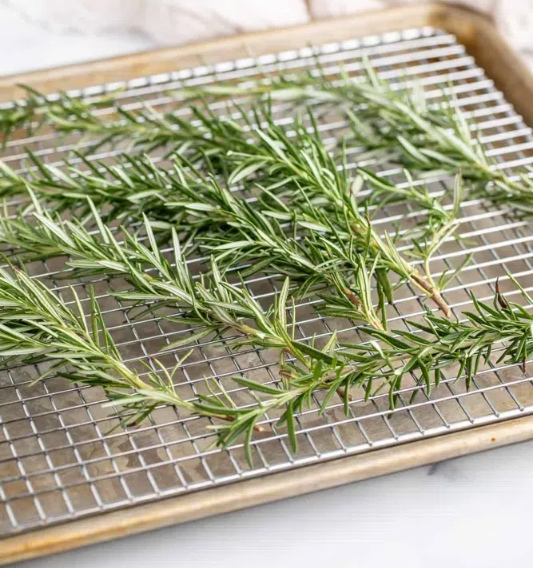
Content Menu
● Why Dehydrate Rosemary?
● Benefits of Using a Food Dehydrator
● Equipment Needed
● Step-by-Step Guide to Dehydrate Rosemary
>> Step 1: Harvest or Purchase Fresh Rosemary
>> Step 2: Wash the Rosemary
>> Step 3: Dry the Rosemary
>> Step 4: Prepare the Dehydrator
>> Step 5: Dehydrate Rosemary
>> Step 6: Store Dried Rosemary
● Tips for Successful Dehydration
● Alternative Methods for Drying Rosemary
>> Air Drying
>> Oven Drying
● Storing Dried Rosemary
● Conclusion
● FAQ
>> 1. What is the best temperature to dehydrate rosemary?
>> 2. How long does it take to dehydrate rosemary?
>> 3. Can I dehydrate rosemary without a dehydrator?
>> 4. How should I store dried rosemary?
>> 5. Can I use dried rosemary instead of fresh?
● Citations:
Dehydrating rosemary is a fantastic way to preserve this aromatic herb for use in various culinary applications. A food dehydrator is an excellent tool for this purpose, as it provides controlled heat and airflow, ensuring that the rosemary retains its flavor and nutrients. This guide will walk you through the process of dehydrating rosemary using a food dehydrator, including preparation, drying times, and storage tips.

Why Dehydrate Rosemary?
Dehydrating rosemary allows you to enjoy its robust flavor long after the growing season. Dried rosemary can be used in various dishes, from soups and stews to marinades and roasted meats. The dehydration process concentrates the herb's flavor, making it more potent than fresh rosemary. Additionally, dehydrated herbs take up less space and have a longer shelf life than their fresh counterparts.
Benefits of Using a Food Dehydrator
Using a food dehydrator offers several advantages over traditional drying methods:
- Controlled Environment: Dehydrators maintain consistent temperatures, reducing the risk of mold and ensuring even drying.
- Speed: Dried herbs can be ready in just a few hours compared to days with air-drying methods.
- Preservation of Nutrients: Dehydrators allow for lower drying temperatures, which helps retain essential oils and nutrients.
- Cleanliness: Unlike air-drying, which can attract dust and insects, a dehydrator keeps herbs enclosed during the drying process.
Equipment Needed
- Food Dehydrator: The primary tool for dehydrating herbs.
- Fresh Rosemary: Either homegrown or store-bought.
- Bowl of Water: For washing the rosemary.
- Salad Spinner or Paper Towels: To remove excess moisture.
- Airtight Container: For storing dried rosemary.
Step-by-Step Guide to Dehydrate Rosemary
Step 1: Harvest or Purchase Fresh Rosemary
If you are harvesting your own rosemary, pick it early in the morning when the oils are most concentrated. Choose healthy sprigs with vibrant green leaves.
Step 2: Wash the Rosemary
Rinse the rosemary under cold water or soak it in a bowl of water to remove dirt and insects. This step is crucial as it ensures that any contaminants are washed away before the drying process begins.
Step 3: Dry the Rosemary
After washing, use a salad spinner or paper towels to remove excess moisture. The drier the sprigs are before placing them in the dehydrator, the quicker they will dry.

Step 4: Prepare the Dehydrator
- Arrange Sprigs: Lay the rosemary sprigs in a single layer on the dehydrator trays. Ensure they are not overlapping to allow for proper air circulation.
- Set Temperature: Set your food dehydrator to a temperature between 95°F and 105°F (35°C - 40°C). This low temperature helps preserve flavor and nutrients.
Step 5: Dehydrate Rosemary
- Drying Time: The drying process typically takes between 8 to 14 hours. Check every couple of hours to monitor progress. The rosemary is ready when the leaves are brittle and easily crumble when touched.
Step 6: Store Dried Rosemary
Once fully dried, strip the leaves from the stems and store them in an airtight container away from light and heat sources. Properly stored dried rosemary can last for up to a year.
Tips for Successful Dehydration
- Humidity Matters: High humidity can increase drying time, so consider your environment when planning to dehydrate herbs.
- Check Regularly: Open your dehydrator occasionally to check on the progress and ensure even drying.
- Avoid Overcrowding: Do not overload your dehydrator; this can lead to uneven drying.
Alternative Methods for Drying Rosemary
While using a food dehydrator is one of the most efficient methods for drying rosemary, there are other techniques that can also yield good results:
Air Drying
1. Gather several sprigs of rosemary into small loose bunches.
2. Tie the bottoms of the stems together with string.
3. Hang the rosemary bunches upside down in a dry, clean, dark place with good air circulation.
4. Allow them to hang undisturbed for about two to three weeks until dry.
Air drying is simple but can take longer than using a dehydrator. It's best suited for dry climates where humidity is low.
Oven Drying
1. Preheat your oven to its lowest setting (typically around 140°F).
2. Place fresh rosemary on baking sheets lined with parchment paper.
3. Prop open the oven door slightly with a wooden spoon to allow moisture to escape.
4. Check every 30 minutes until dry (this usually takes about 2–4 hours).
Oven drying is faster than air drying but requires more attention to prevent burning.
Storing Dried Rosemary
Proper storage is essential for maintaining the quality of dried rosemary:
- Use airtight containers made of glass or metal.
- Store in a cool, dark place away from direct sunlight.
- Label containers with harvest dates to keep track of freshness.
Dried rosemary can last up to one year when stored correctly; however, its flavor may diminish over time.
Conclusion
Dehydrating rosemary is a simple yet rewarding process that allows you to enjoy this flavorful herb year-round. Using a food dehydrator not only preserves its aromatic qualities but also provides an efficient way to store herbs without losing their nutritional value. With just a few steps, you can transform fresh rosemary into a pantry staple that enhances your culinary creations.

FAQ
1. What is the best temperature to dehydrate rosemary?
The ideal temperature for dehydrating rosemary is between 95°F and 105°F (35°C - 40°C) to preserve its flavor and nutrients.
2. How long does it take to dehydrate rosemary?
It typically takes between 8 to 14 hours to dehydrate rosemary fully, depending on humidity levels and how much moisture is in the fresh herb.
3. Can I dehydrate rosemary without a dehydrator?
Yes, you can use an oven set at its lowest temperature or air-dry it by hanging sprigs in a dry place; however, these methods may not preserve flavor as well as a dehydrator.
4. How should I store dried rosemary?
Store dried rosemary in an airtight container in a cool dark place away from light and heat sources for maximum freshness.
5. Can I use dried rosemary instead of fresh?
Yes, you can use dried rosemary instead of fresh; however, use about one-third less dried herb than you would fresh due to its concentrated flavor.
Citations:
[1] https://flouronmyface.com/how-to-dehydrate-rosemary/
[2] https://selfsufficientme.com/4-reasons-to-use-a-dehydrator-instead-of-natural-to-dry-herbs-spices/
[3] https://www.preservemania.com/food-shelf-life/dried-rosemary/
[4] https://www.thepurposefulpantry.com/how-to-dehydrate-rosemary/
[5] https://brodandtaylor.com/blogs/recipes/dehydrating-herbs
[6] https://plantura.garden/uk/herbs/rosemary/drying-and-storing-rosemary
[7] https://www.alphafoodie.com/how-to-dry-rosemary/
[8] https://dehydratedcookbook.com/food-dehydrator-benefits/
[9] https://getsprigbox.com/blogs/herbs/how-to-dry-and-store-rosemary
[10] https://www.sustainablecooks.com/how-to-dry-rosemary/
[11] https://www.youtube.com/watch?v=dJKT6kMFzSE
[12] https://growzone.se/foodstuff/food-dehydrator-tips-to-dry-your-herbs-vegetables-and-more/
[13] https://www.beyondthechickencoop.com/drying-rosemary/
[14] https://www.reddit.com/r/aerogarden/comments/scztys/has_anyone_here_used_a_dehydrator_on_their_herb/
[15] https://www.stetted.com/how-to-dry-rosemary/
[16] https://www.webmd.com/diet/dehydrating-food-good-for-you
[17] https://www.epicurious.com/expert-advice/how-to-dry-rosemary-step-by-step-article
[18] https://www.luvele.com.au/blogs/recipe-blog/best-tips-for-drying-herbs-in-a-food-dehydrator
[19] https://theherbalacademy.com/blog/dry-fresh-herbs-using-a-dehydrator/
[20] https://www.youtube.com/watch?v=TqjTzuLyp6s











